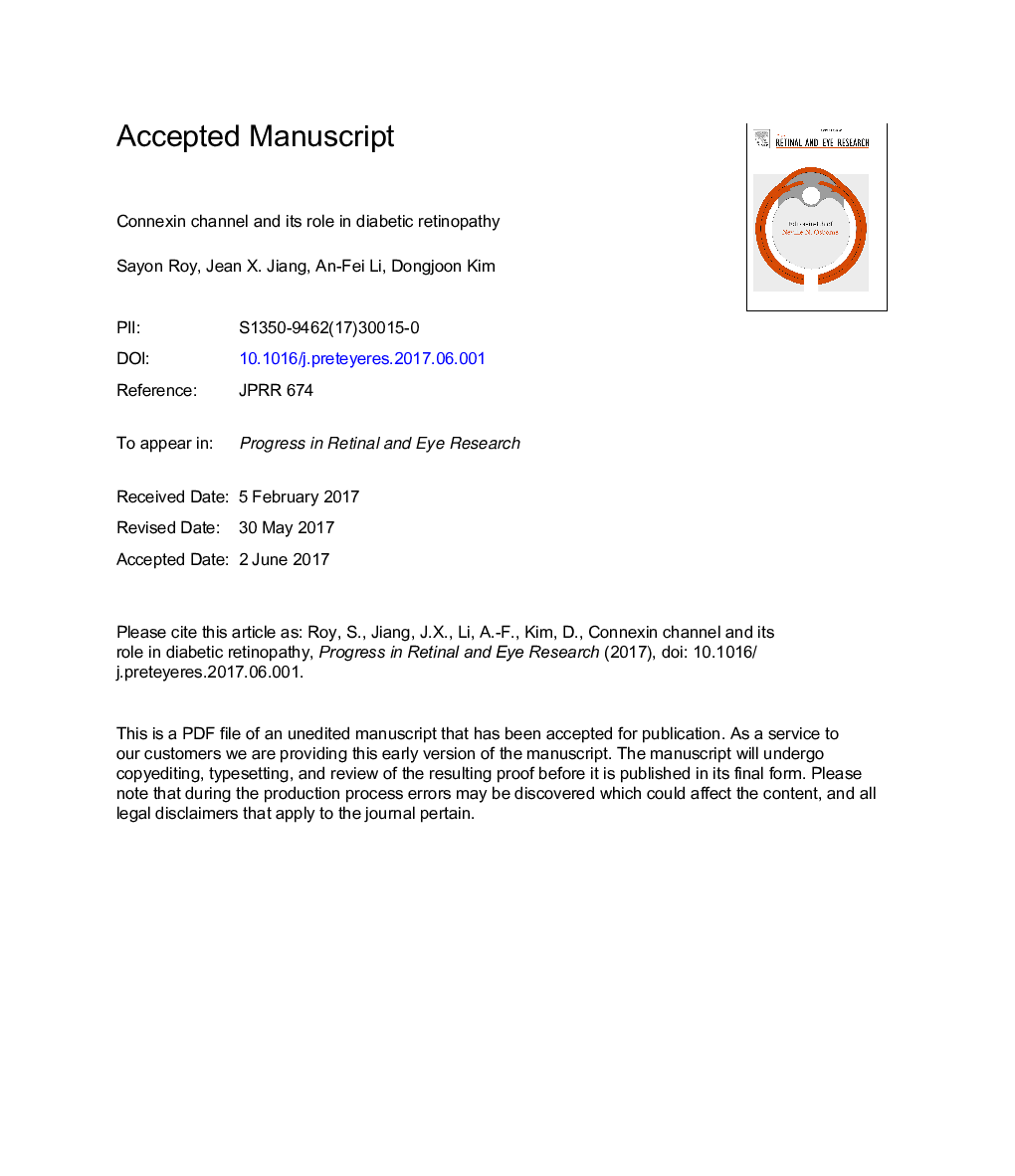| Article ID | Journal | Published Year | Pages | File Type |
|---|---|---|---|---|
| 8795050 | Progress in Retinal and Eye Research | 2017 | 103 Pages |
Abstract
Diabetic retinopathy is the leading cause of blindness in the working age population. Unfortunately, there is no cure for this devastating ocular complication. The early stage of diabetic retinopathy is characterized by the loss of various cell types in the retina, namely endothelial cells and pericytes. As the disease progresses, vascular leakage, a clinical hallmark of diabetic retinopathy, becomes evident and may eventually lead to diabetic macular edema, the most common cause of vision loss in diabetic retinopathy. Substantial evidence indicates that the disruption of connexin-mediated cellular communication plays a critical role in the pathogenesis of diabetic retinopathy. Yet, it is unclear how altered communication via connexin channel mediated cell-to-cell and cell-to-extracellular microenvironment is linked to the development of diabetic retinopathy. Recent observations suggest the possibility that connexin hemichannels may play a role in the pathogenesis of diabetic retinopathy by allowing communication between cells and the microenvironment. Interestingly, recent studies suggest that connexin channels may be involved in regulating retinal vascular permeability. These cellular events are coordinated at least in part via connexin-mediated intercellular communication and the maintenance of retinal vascular homeostasis. This review highlights the effect of high glucose and diabetic condition on connexin channels and their impact on the development of diabetic retinopathy.
Related Topics
Life Sciences
Neuroscience
Sensory Systems
Authors
Sayon Roy, Jean X. Jiang, An-Fei Li, Dongjoon Kim,
